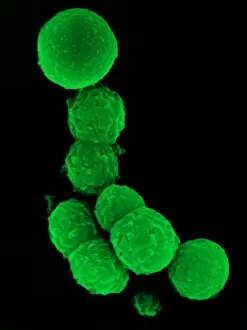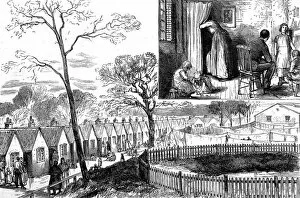Infected Collection (page 20)
"Unveiling the Hidden World of Infection
All Professionally Made to Order for Quick Shipping
"Unveiling the Hidden World of Infection: A Glimpse into Medical History and Microscopic Marvels" Step back in time to the 19th century as we explore the fascinating world of infection. Calots spinal surgery, a groundbreaking procedure for its time, left surgeons grappling with the challenges of preventing post-operative infections. In another breakthrough, tuberculosis detection took a leap forward with the advent of X-ray technology. This revolutionary method allowed doctors to visualize the disease within patients' lungs, aiding in diagnosis and treatment. Delving deeper into microscopic realms, we encounter head lice through scanning electron microscopy (SEM). These tiny parasites that plagued humanity throughout history come to life under high magnification. Moving on from lice to bacteria, SEM reveals E. Coli's intricate structure. The detailed images showcase these notorious pathogens responsible for various illnesses and foodborne outbreaks. Shifting our focus to bacterial meningitis, magnetic resonance imaging (MRI) scans provide invaluable insights into this dangerous infection affecting the brain and spinal cord. The non-invasive nature of MRI aids in early detection and prompt intervention. Venturing outdoors brings us face-to-face with sandflies—a carrier of diseases such as leishmaniasis—captured through powerful microscopes that expose their delicate features. Witnessing phagocytosis at work is truly awe-inspiring when observing fungal spores being engulfed by immune cells under SEM. This process showcases our body's defense mechanism against harmful invaders. Transitioning from fungi to viruses, transmission electron microscopy (TEM) unravels hepatitis C viruses lurking within liver cells—an essential tool for understanding viral infections and developing effective treatments. Further exploring TEM's capabilities reveals intestinal protozoan parasites wreaking havoc inside human intestines. These microscopic organisms cause severe gastrointestinal distress but can now be studied more closely than ever before.


















